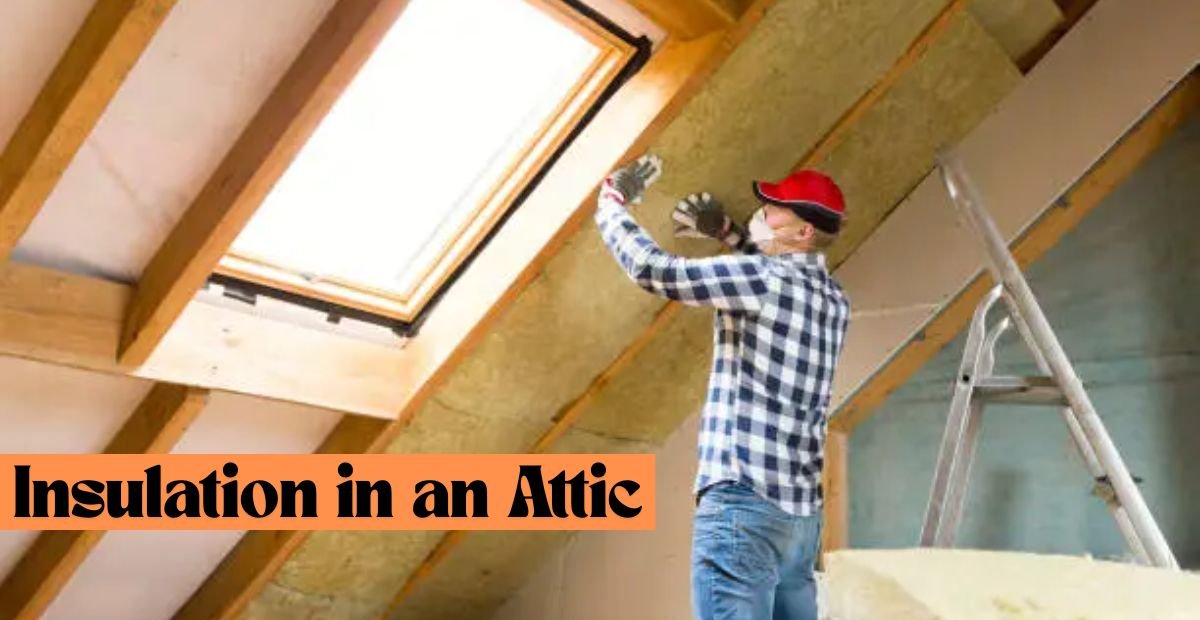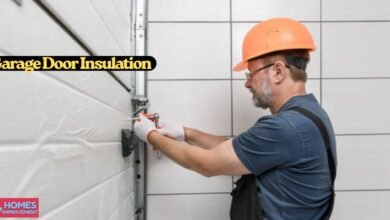Insulation in an Attic: Your Complete Cost & Benefits Guide for 2025

Insulating your attic is one of the most cost-effective ways to boost your home’s energy efficiency. In 2025, rising energy costs and climate concerns make it more important than ever. Proper attic insulation helps maintain indoor temperatures, reduces strain on HVAC systems, and cuts utility bills. Whether you’re building a new home or upgrading an old one, this simple improvement offers long-term rewards. From material options to pricing and benefits, understanding your choices is key. This guide breaks down everything you need to know before investing in insulation in an attic.
Why Insulation in an Attic Matters More Than Ever in 2025
As energy prices continue to rise, insulating your attic is one of the smartest ways to cut down on utility bills. In 2025, modern homeowners are increasingly aware of energy efficiency—not just for cost savings but also for reducing their carbon footprint. Insulation in an attic acts as a thermal barrier, trapping warm air inside during winter and keeping hot air out during summer. Without proper insulation, as much as 25% of heat can escape through the attic, resulting in higher energy consumption. Whether you’re living in a cold or hot region, attic insulation improves indoor comfort and helps regulate temperature all year round. It’s not just a renovation; it’s a long-term investment in your home’s efficiency. By insulating your attic, you’re also adding resale value to your property—a huge plus in today’s competitive housing market.
Types of Insulation in an Attic You Can Choose From
When selecting insulation in an attic, it’s important to choose the right type based on your climate, budget, and attic structure. Each insulation material offers different benefits in terms of coverage, cost, and energy efficiency. In 2025, homeowners have several updated options that meet modern energy standards. Whether you’re aiming for a quick DIY fix or a professional-level upgrade, understanding the available types can help you make an informed decision. Some are better suited for tight, irregular spaces, while others are ideal for larger attics with open joists. Here are the most common insulation types used today:
- Fiberglass Batts or Rolls – Affordable and easy to install, ideal for standard attic joists.
- Blown-In Cellulose – Made from recycled paper, it offers good coverage and eco-friendliness.
- Spray Foam Insulation – Provides high R-value and air sealing but comes at a higher cost.
- Rigid Foam Boards – Best for small spaces or specific structural areas like attic doors.
- Mineral Wool – Fire-resistant and soundproof, great for added safety.
Each type has pros and cons, so consider consulting a professional before making your final choice.
How Much Does Insulation in an Attic Cost in 2025?
The cost of insulation in an attic depends on the material, attic size, and whether you DIY or hire a pro. On average, prices range from $1.50 to $4.00 per square foot. While fiberglass and cellulose are budget-friendly, spray foam costs more but delivers better performance. Here’s a quick cost comparison to help you decide:
| Type of Insulation | Cost per Sq. Ft. (2025) | Estimated Total for 1,200 Sq. Ft. | Installation Type |
| Fiberglass Batts | $1.50 – $2.50 | $1,800 – $3,000 | DIY or Professional |
| Blown-In Cellulose | $1.80 – $2.70 | $2,160 – $3,240 | Professional Recommended |
| Spray Foam | $3.00 – $4.00+ | $3,600 – $4,800+ | Professional Only |
| Rigid Foam Boards | $2.00 – $3.50 | $2,400 – $4,200 | DIY or Professional |
| Mineral Wool | $2.00 – $3.00 | $2,400 – $3,600 | Professional Preferred |
This table gives a helpful overview to compare costs before choosing the right type of insulation for your attic.
Short-Term vs. Long-Term Benefits of Attic Insulation
Short-Term Benefits
Installing insulation in an attic brings immediate comfort improvements. Rooms maintain a more stable temperature, reducing cold drafts in winter and excess heat in summer. Your HVAC system won’t have to work as hard, so you’ll likely see lower energy bills within the first month. These early savings make insulation a smart and fast-return investment.
Long-Term Benefits
Over the years, attic insulation continues to pay off by extending your HVAC system’s lifespan and reducing the need for frequent repairs. It also boosts your home’s resale value and contributes to a lower carbon footprint. In 2025, homes with good insulation are more attractive to buyers and meet modern energy standards. The return on investment grows stronger the longer you live in your home.
Key Benefits of Insulation in an Attic
- Cuts monthly energy bills by up to 20%
- Improves indoor temperature control
- Reduces HVAC wear and maintenance
- Increases home resale value
- Supports eco-friendly, energy-efficient living
- Helps prevent mold and moisture buildup
- Qualifies for energy rebates and tax credits
Common Mistakes to Avoid During Attic Insulation
Many DIY enthusiasts attempt attic insulation projects themselves, but mistakes can cost more in the long run. One of the biggest errors is not sealing air leaks before installation. Air leakage reduces the effectiveness of insulation and increases energy use. Another mistake is choosing the wrong R-value, which measures thermal resistance. In 2025, building codes have updated R-value recommendations depending on your climate zone—using too low or too high an R-value can both be inefficient. Improper installation, such as leaving gaps or compressing insulation, also reduces performance. Moreover, some homeowners overlook proper ventilation. A well-insulated attic without good airflow can trap moisture, leading to mold and wood rot. To avoid these costly errors, it’s wise to consult or hire professionals who follow updated standards and energy codes.
Can You DIY Insulation in an Attic?
Insulating your attic yourself may seem cost-effective, and for small, accessible spaces, it can be. Fiberglass batts or blown-in insulation kits are widely available and manageable for skilled DIYers. However, if your attic has wiring, plumbing, or is hard to access, it’s safer to leave the job to professionals. Spray foam installation, in particular, requires specialized equipment and safety gear. In 2025, more DIY guides are available online, but they often overlook critical details like air sealing, vapor barriers, and proper R-values. Mistakes made during a DIY project can compromise energy savings and potentially damage your home. If you’re confident in your abilities and understand the risks, DIY insulation might work for you. Still, having an expert inspect your work afterward can provide peace of mind and catch any missed issues.
Signs That Your Attic Needs Better Insulation
How do you know if your home needs improved insulation in an attic? Common signs include uneven room temperatures, cold drafts, and high energy bills—especially during extreme weather. If your attic floor joists are visible or your home feels chilly despite a working heater, it might be time to upgrade. In 2025, infrared cameras and home energy audits make it easier to assess insulation performance. Frequent HVAC cycling or rising monthly energy costs also point to insulation inefficiencies. You might also notice pests or moisture buildup, which often occur in poorly insulated spaces. Addressing these signs early can help you avoid more costly problems later. Insulation upgrades not only fix comfort issues but also prevent mold, structural damage, and air leaks.
Professional Installation vs. DIY: Which Is Better in 2025?
Professional Installation
Hiring a professional for insulation in an attic ensures precision, code compliance, and long-term performance. In 2025, certified installers follow updated building standards and can spot issues like air leaks or moisture risks. Though it costs more upfront, you get guaranteed quality and often a warranty. This option is ideal for larger homes or complex attic layouts.
DIY Installation
DIY insulation appeals to homeowners looking to save on labor costs, especially for small or easy-to-access attics. Materials like fiberglass batts and DIY cellulose kits are widely available and beginner-friendly. However, missing steps like air sealing or using the wrong R-value can lower efficiency. It works best if you’re confident in your skills and safety measures.
Which Is Better in 2025?
| Factor | DIY Installation | Professional Installation |
| Cost | Lower upfront cost | Higher upfront cost with long-term value |
| Skill Level Required | Moderate (DIY experience recommended) | None (handled by certified experts) |
| Time & Effort | Time-consuming, labor-intensive | Faster and more efficient |
| Code Compliance | May miss current building codes | Fully compliant with 2025 energy standards |
| Efficiency | Varies based on installation quality | Consistent and high energy performance |
| Best For | Small, accessible attics | Large, complex, or older homes |
| Warranty & Guarantees | Not included | Often includes workmanship warranties |
DIY may be a smart choice for budget-conscious homeowners with simple attic layouts. But for those looking for maximum performance, energy savings, and peace of mind, professional installation is the better choice in 2025.
Conclusion
Insulation in an attic remains one of the smartest home upgrades you can make in 2025. It improves energy efficiency, enhances comfort, reduces utility bills, and adds value to your property. With a variety of materials and methods available, you can choose a solution that fits your budget and climate needs. Whether you opt for professional installation or a careful DIY job, the results can be long-lasting and cost-effective. Be sure to avoid common mistakes, seal air leaks, and follow updated energy codes. If you’re still asking, “Is attic insulation worth it?”—the answer is a confident yes. Start planning today, and enjoy a more energy-efficient home all year round.
FAQs
How long does insulation in an attic last?
Most attic insulation types last 15–30 years, depending on material and conditions. Fiberglass and cellulose last long if kept dry, while spray foam can last even longer with minimal maintenance.
Is attic insulation worth the cost in 2025?
Yes, absolutely. With rising energy prices and better government incentives, insulation in an attic pays for itself through lower utility bills and improved home value.
Can I install attic insulation myself?
Yes, if your attic is safe and accessible, and you’re using basic materials like fiberglass. But for spray foam or complex spaces, hiring a professional is highly recommended.





